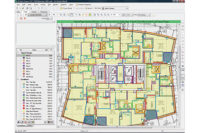
If the project manager uses the estimator’s takeoff and budget as the benchmark the likelihood of project success is limited. This is of course no fault of the estimator, it is simply a result of ‘not knowing what you don’t know’ at the time of the bid. A takeoff and bid used to sell the work is not the same as a takeoff and budget used to build the job. Project managers should complete their own analysis of the project. After winning the contract, at a minimum a thorough review of the quantity takeoff as well as the material and labor budget should be conducted. The best practice however is for the project manager to deploy value engineering to save on materials, labor, and equipment.
Although Value Engineering has its roots in manufacturing it has been utilized in the construction industry for a number of decades. VE is a focused, innovative way to review project requirements and to achieve the end result at the lowest total cost over the life of the project. It is not intended to be a process for a project manager to review the work of a peer, such as an estimator, or purely that of a cost cutting process. The earlier in the lifecycle of the project that VE is deployed, the higher the probability of project success. VE will save money on materials, labor, and equipment.
Project managers who complete their own independent takeoff and pricing exercise do so at a greater level of detail. There is more information available to them and there is time to dive deeper into the project specifications. Project managers who utilize this method achieve a higher gross margin than those who don’t take the time to complete this exercise. A project that begins with this detailed scrutiny sets a solid foundation to prevent and ideally eliminate cost overruns.
There really is no better way to learn and understand a project than to do a takeoff and price it. The depth and level of understanding around a project is significantly higher than reviewing someone else’s work on the project. During this process the project manager may find anomalies or errors in the original bid. If an error is found, the best time to identify the issue is during the project set up, not when the job is 20, 30 or 50 percent complete. The earlier the error is identified, the lower the cost to resolve it, and the less impact it will have on other project phases.

Project managers should set a personal goal of finding, at minimum, a 5 to 10 percent cost saving as part of setting up the job. A thorough review of the specifications should be included. There are risks or rewards that are found in the specifications during the project manager takeoff that might have been overlooked or did not exist at the time of the original bid. Specific items that should be included in the project manager’s takeoff are material substitutions, pre-ordering material at custom lengths, and potential prefabrication.
Another key element to consider in avoiding cost overruns is knowing who all the players are in the project. This helps with staging and sequencing the work at a greater level of detail. It is at this point that the labor budget strategy is determined. The project is then broken down into floors, rooms, phases, etc. for better job costing (i.e. building, floor, room, elevations, etc.). The right size and mix of crew is determined. Site and stocking considerations are reviewed.
The next extensive analysis before start of construction is developing a construction ready budget. The best budgets are collaborative, credible, and measurable. This collaboration/teamwork starts between the estimator and the project manager and is then carried on between the project manager and the site foreman. The budget deliverables include: a color-coded takeoff, detailed color-coded labor costs, a solution to keep track of the budget, reports for additional material, scope, and change order updates. The takeoff and pricing is done with the foreman. Because of this collaboration, when the foreman receives the color coded plans and corresponding stock list and labor budget it is then easier to track and manage the job.
Companies that budget and track their labor using areas and detailed codes have more consistent job cost data, better estimates, and arguably greater profits. Everyone in the company should use the same list of codes. This includes other branches and departments. The best way to do this is to sit down as a team and debate (i.e. argue loudly) over what the company’s codes should be. Develop a list-agree to it-stick to it. When creating these codes, consider how the codes enable tracking changes separately. Not every single code is necessary for every single job. The sequence of work and crew size will dictate how many codes should be used.
Everyone reaps the benefits when standards are established before construction: data is consistent, accounting will have fewer errors, job cost reporting is more actionable, problem areas are addressed more quickly, and in general there is better estimating. This result leads to more successful projects because the foreman and project manager have a clear, agreed upon direction.
Not all companies follow these exact practices all of the time-but they should. Great project managers are a highly valued part of the team. Most project managers have the ability to be great and simply need coaching to become that critical asset to the company. The initial best practices discussed here focus on the time between winning the bid and project kickoff. Part two of this series will discuss best practices to employ when the project is under construction.






Report Abusive Comment